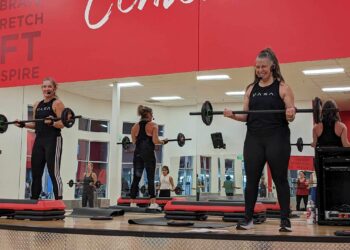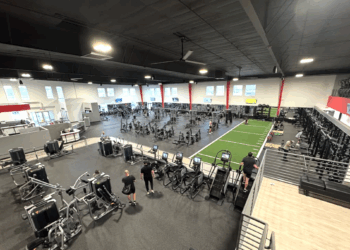Nicole Maue, the marketing executive for Myzone, shares why you should digitalize your gym offering with wearables.
Gyms owners across the U.S. were able to breathe a sigh of relief once states began giving the green light to reopen to the public. But, as the government’s restrictions continue to change, the future is far from certain. How can operators ensure they can stay relevant and connected to their audience during this time?
Fitness apps and wearables have featured in the top three American College of Sports Medicine’s fitness trends survey for several years now. Many of these help individuals to track their own metrics, but some also provide a connection to the fitness business using inclusive, game-based mechanics and social functionalities to build communities and drive habit formation, all of which are precursors for increased member retention.
Despite the uncertainty, there are measures operators can put in place to protect their businesses and ensure they stay relevant and connected to their members. And the simple way to do that is to digitalize your gym offerings.
With an online fitness offer, facilities can still meet the needs of members in house, but also cater for those who couldn’t book into the class, who are shielding family members or who just don’t feel confident in returning to the facility environment.
In this new world of health and wellbeing, the needs of the member will change, but it is important operators continue to support the message of clear and achievable activity goals based around effort and consistency. How?
Create challenges for members, which they can take part in regardless of where or how they choose to exercise. Challenges based around a collective total will help members remain part of the club’s community and keep them on track, increasing the chances of their return.
Offer live, at-home workouts for the members that feel uncomfortable visiting the club. Numerous clients have reported that the first ever virtual live group workout launched during the pandemic has saved their clubs during lockdown by allowing them to stay connected with members, enabling them to exercise together while receiving real-time biometric feedback and personalized coaching from their usual trainers. They’ve also been able to reach entirely new audiences.
In these most challenging of times, operators have the opportunity to provide positivity and community, but consumer confidence is vital. People need to know that their gym will provide safe environments, will support them at home and in their clubs, and ultimately improve both their mental and physical wellbeing.
COVID-19 will be around for the foreseeable future, so it is important for everyone to adapt and that means offering a digital fitness solution to complement the bricks and mortar business. It is important to continue encouraging members to get fit and lose weight to give themselves the best chance of fighting COVID-19. And that means ensuring facilities deliver their services where people want to consume them. For some, that will always be in the facility, but for many others that will be at home where they feel safest.
The hybrid facility has the best chance of succeeding in these challenging times.
Stay ahead in the fitness industry with exclusive updates!
Nicole Maue is the marketing and PR executive at Myzone. She can be reached atnicole.maue@myzone.org, or visitmyzone.org.










